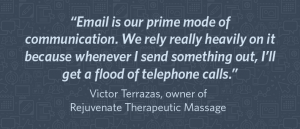September 20, 2016

Giving and receiving feedback is an important part of coaching. Technology can greatly enhance leaders’ ability to do this, especially when they are juggling the challenges of virtual coaching.
In general, the use of technology in coaching is a positive trend because it makes it easier for managers to give immediate feedback. Smartphone apps and other tools also allow managers and employees to keep a record of the positive comments and concerns others have shared with them.
Unfortunately, it appears that convenience and data collection have a higher priority than the quality of the feedback.
Decades of research has shown that effective feedback has several characteristics, including:
- A focus on one or two important issues
- A balance of praise and constructive criticism
- Addressing issues within the recipient’s control (something they can do something about)
- Interactive (done in a way that encourages two-way communication focused on problem solving).
The current crop of feedback apps are great for giving positive feedback but are much less effective when it comes to constructive (or negative) feedback. Giving constructive feedback in a way that reduces defensiveness and motivates action requires skill that can’t be automated.
Whether they give feedback virtually using an app or face-to-face, managers should use four skills to ensure their constructive feedback is perceived to be helpful and useful.
Maintain and Enhance Self-Esteem
Because of the great impact self-esteem has on performance, it is a theme that runs throughout the performance the feedback and coaching process.
Research has demonstrated that people are motivated to work at a level consistent with their perceptions of their own competence. Managers have a significant impact on their direct reports’ perceptions of competence. If a manager erodes a direct report’s self-esteem, that person’s productivity and performance level are negatively impacted. If the manager enhances a direct report’s self-esteem, that person’s motivation increases.
Active Listening
Effective managers are effective two-way communicators. “Two-way” means they first listen to make sure that they hear what others are saying, and then they respond in a way that shows others that they have been heard and understood. This helps reduce defensiveness, promote self-esteem, and defuse emotional exchanges, which, in turn, enables people to engage in productive problem solving. The three listening skills are:
- Paraphrasing – Restating in your own words your understanding of what the other person said. This shows that you understand (but not necessarily that you agree with) what the other person is saying
- Empathizing – Reflecting back, in your own words, your understanding of what the person is feeling and the reason for the feeling—without adding any opinions or advice
- Questioning – Used when you need to collect additional information, clarify information, and encourage problem solving
Focus on Behavior
When discussing performance, it is important to be specific about what a person is doing or saying. This puts the focus on the person’s behavior or actions, rather than on attitude or personality, which is likely to provoke defensiveness. If your boss told you that you “lack commitment,” you would not know exactly what you needed to do differently. To improve your performance you would need to know what was it that you said or did that indicated to your boss that you lacked commitment. Are you arriving late to meetings? Are you missing deadlines? Are you failing to provide team members with needed information or updates?
Furthermore, such a label runs the risk of triggering an emotional reaction (anger or resentment) that could negatively affect the person’s performance. Therefore, to communicate clearly and effectively, focus on the specific behavior—what the person is or is not doing or saying.
Balanced Feedback
Balanced feedback gives others information on what they are doing effectively (performance and behaviors) and on what they could do differently to better meet expectations, to be more effective, or to improve future performance results.
There are several benefits to providing feedback in a balanced way. It allows strengths to be leveraged and recognized, regardless of gaps/concerns, enables concerns and gaps to be overcome without losing sight of strengths, maintains the other person’s self-esteem and self-confidence, and helps reduce defensiveness.
Using these three key skills will increase the likelihood the other person will perceive the feedback you give is helpful, useful and constructive. These skills are also fundamental to maintaining and enhancing self-confidence of the other person and creating a culture of giving and receiving feedback.
The ability to coach employees and give constructive feedback is an essential leadership skill. Like all skills, it can be developed and enhanced through leadership development and training.
Business & Finance Articles on Business 2 Community
(27)









